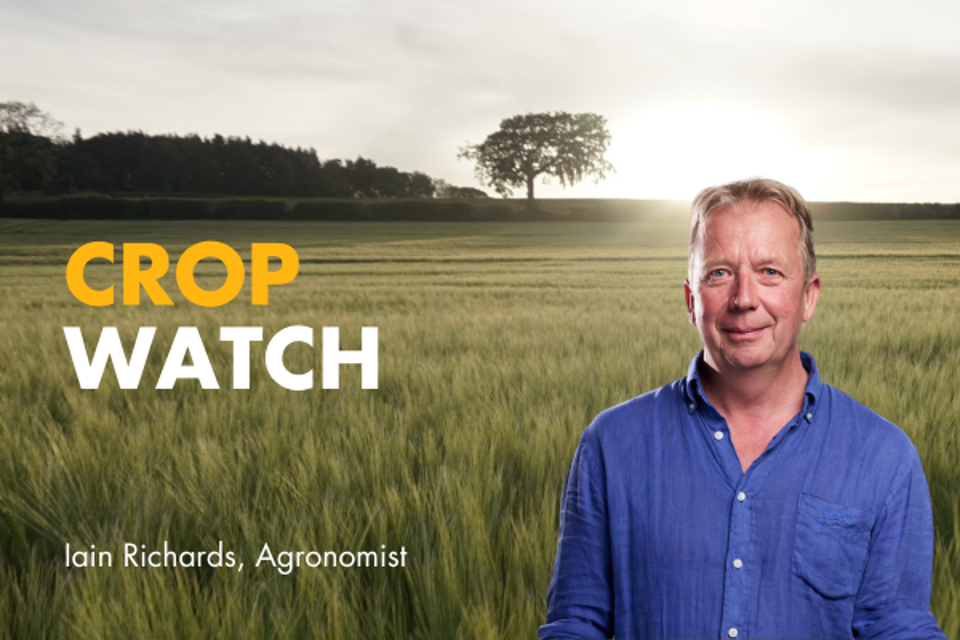
Cropwatch | June 2024
Blog - 28.06.24
The regular rainfall this spring has been positive and negative for crops in the area.
It has been a godsend for backward winter and spring crops, but with the wet weather has come the pressing challenge of disease control and timely spray applications.
Wheat crops look good, but we are becoming increasingly concerned about disease levels. Regular rainfall and warmer temperatures have encouraged Septoria to rear its head, particularly on the earlier drilled crops. We also can’t forget about yellow rust, which continues to be a threat, and there is a lot of brown rust in Crusoe.
The weather has also limited the available spray days. Even the most efficient sprayer operations have had gaps between the T1 and T2 fungicide of up to 28 days, which has led to some levels of latent Septoria for fungicides to contend with. It all adds up to make T3 quite complicated.
In most situations, we will be looking for a Septoria and rust top-up, and with milling premiums where they are, we can’t forget about Fusarium. Fortunately, the outlook for achieving protein spec on our milling wheat is positive.
An inch of rainfall shortly after the final nitrogen application means the crop will have quickly taken it up. This spring has suited our backward winter wheat crops. They came into it with very shallow roots, and we worried about how they would fare if conditions turned dry.
They haven’t struggled for water, which has also helped with nitrogen uptake. The crops have held onto tillers and look much better than we had expected. Despite the improved outlook for these backward crops, it has made us realise how important crop competition is for grass weed control.
It’s a similar story for some earlier drilled crops that had their autumn pre- and peri-emergence herbicides disrupted and spring contact herbicides applied much later than ideal. Effective grass weed control requires all of the pieces of the jigsaw, which hasn’t always been possible this season.
Oilseed rape continues to be full of promise. Crops have podded well which seem to be filling nicely. The next time we go into oilseed rape will be for desiccation in July, when we expect to be anticipating good returns.
Spring barley crops look fantastic. We have established 350 plants/m2, and they will all have a main stem and at least two tillers, giving us well over 1000 shoots/m2.
Even our later drillings have tillered better than we had ever imagined. The challenge is to keep them standing and avoiding brackling closer to harvest. We have a big push on late PGRs at a T1.5 timing, where we also plan to include folpet for Ramularia.
T1 fungicides have been applied to all our barley crops, and T2s have begun in our earlier drillings. So far, programmes have kept rhynchosporium and net blotch in check, leaving us hopeful for harvest.
Join Our Community

Agrii X
We love engaging with clients and partners. Give us a follow and let's share stories for the community.

Agrii Instagram
A picture paints a thousand words. Follow us on Instagram to see what we are up to.

Agrii Facebook
Follow us on the worlds biggest social media site for the latest news and events straight to your feed.

Agrii LinkedIn
If you are all about the business, connect with us on LinkedIn to build your network
Stay In Touch

Journal Sign-Up
Receive email updates on topical news and information from around Agrii and UK Farming.

Listen To Our Podcasts
Listen to the Tramlines Podcast. Fortnightly chat about agriculture and trials with your host Tony Smith.

Agrii Insights
Read essential agri intelligence for profitable farming.

Find an Event
Join us for our upcoming events and tours.



